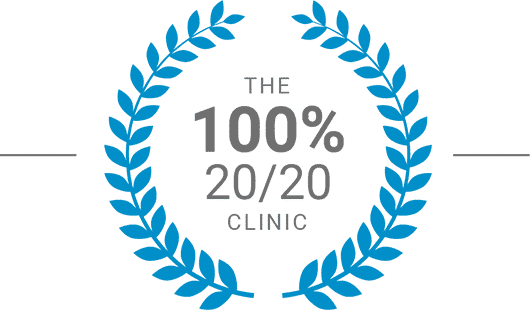Book Your Free Consultation
Mr David Allamby
MD, FRCOphth, FRCS
A common refractive error, myopia affects millions of people worldwide. Understanding its origins is crucial for effective management.
This comprehensive guide unravels the factors contributing to myopia, from genetic predispositions to environmental influences. As a leading authority in eye care, Focus Clinics aims to equip you with knowledge about this condition, empowering you to make informed decisions about your eye health.
Whether you're navigating myopia personally or seeking insights for a loved one, our exploration will shed light on the intricate interplay of genetics, lifestyle, and environmental triggers.
Understanding the mechanisms that shape nearsightedness and understanding the factors involved is vital to effective management.
Myopia, commonly known as nearsightedness or shortsightedness, is a prevalent refractive error that affects the eyes' ability to focus on distant objects. In individuals with myopia, close objects are seen clearly, but attempting to focus further away will result in blurry vision.
This condition occurs when the eyeball is too long (or, more rarely, when the cornea's curvature is too steep), causing light entering through the natural lens into the eye to be focused in front of the retina rather than directly on it.
Most often, myopia develops at a young age, in children between 8 and 12 years old, but will become significantly worse during puberty as the body experiences a rapid period of growth.
While myopia can occur in adulthood, there is little change to the size and shape of the eye from the age of 20 onwards, reducing the likelihood of development. Myopia that begins as a young adult tends to appear quickly and then not progress much and is usually limited to -1 to -2 dioptres.
Degenerative myopia, also known as progressive myopia, is a severe myopia type in which a worsening of the distance vision causes severe blurry vision to the point of vision loss.
Many patients attempting to control their myopia have to wear glasses or contact lenses.
Besides blurred vision at a distance, there are several symptoms to be on the lookout for if you suspect you or your child has near-sightedness:
Knowing the symptoms is the first step for those looking to correct nearsightedness. Still, an eye doctor is the only individual qualified to diagnose eye health conditions or any refractive errors you may have.
Vision screenings, usually involving a Snellen eye chart, will be used as part of a comprehensive eye exam to test whether you have or are developing myopia.
A combination of genetic and environmental factors influences nearsightedness. Here are some key risk factors associated with the development and progression of myopia:
Understanding these risk factors can help guide myopia prevention and management strategies, emphasising the importance of regular eye exams and lifestyle modifications.
While there is no guaranteed way to prevent myopia, steps can be taken to limit its progression.
Myopia management can involve glasses, contact lenses, and/or atropine eye drops to limit the final severity of shortsightedness and reduce the risk of complications from myopia.
Also, ensuring that you are taking care of your eye health and reducing visual stress are good steps to take.
Blurry sight is the most common symptom of myopia because light rays are focused in front of the retina rather than directly on the retina. However, a host of health concerns and vision problems are associated with shortsightedness.
Individuals with myopia may experience eye strain, headaches, and discomfort, particularly during activities that require focusing on distant objects.
High myopia (severe nearsightedness) is associated with an increased risk of retinal detachment. The elongation of the eyeball can contribute to the thinning of the retina, making it more susceptible to detachment.
There is also some evidence suggesting that individuals with high levels of myopia may have an increased risk of developing glaucoma. This condition can lead to optic nerve damage and vision loss.
Severe myopia is associated with a higher risk of myopic macular degeneration, where the macula (central part of the retina) is damaged, leading to vision loss.
Myopia can be corrected temporarily with glasses and contact lenses or often permanently with refractive surgery such as LASIK, PRK or implantable contact lenses (ICLs).
Glasses are a common and effective method for treating myopia (nearsightedness) by providing clear vision at various distances.
In some cases, especially when myopia is combined with presbyopia (difficulty focusing on close objects due to age), glasses with bifocals or multifocal lenses may be prescribed to address both distance and near vision.
Because glasses provide clear vision only when worn, myopia individuals need to wear them consistently to see distant objects.
Contact lenses are another common and effective method for treating myopia by providing clear vision without the need for traditional eyeglasses.
Soft lenses are myopia's most popular contact lenses, sitting over the natural lens and requiring consistent and proper use. Maintaining good hygiene and adhering to the recommended wearing schedule is crucial to preventing eye infections and complications.
Unfortunately, research shows that many contact lens users do not follow all good hygiene practices, especially younger patients.
Luckily, we can now treat nearsightedness more effectively than ever before. If you want to escape from myopia or are simply tired of wearing glasses or lenses, Focus Clinics can help.
LASIK (Laser-Assisted In Situ Keratomileusis) is a popular refractive surgery that effectively treats myopia (nearsightedness). The laser treatment itself typically takes only a few minutes per eye.
Many patients experience improved vision almost immediately after the surgery, and the full visual outcome is often realised within 1-2 days
LASIK works by reshaping the cornea using a laser. The surgeon creates a thin flap on the cornea, which is lifted to expose the underlying tissue. The laser then precisely removes and sculpts corneal tissue, correcting refractive errors like myopia. The flap is repositioned, promoting rapid healing.
This method of laser eye surgery has a high success rate, and 100% of our patients achieve their desired level of vision correction.
Most patients can return to normal activities within a day or two after LASIK, and there is typically no need for extended downtime.
Photorefractive Keratectomy (PRK) is another laser eye surgery option for treating myopia (nearsightedness). Like LASIK, PRK involves using a laser to reshape the cornea, correcting the refractive error causing myopia.
Unlike LASIK, however, PRK does not involve creating a corneal flap. Instead, the cornea's outer layer (epithelium) is gently removed. The excimer laser precisely removes corneal tissue based on the individual's prescription, and the corneal epithelium then naturally regenerates over several days after the procedure, leading to visual improvement.
PRK is suitable for individuals with thinner corneas or those not eligible for LASIK due to certain corneal conditions.
PRK may be preferred for individuals engaged in activities with a risk of corneal flap complications, such as contact sports, especially martial arts.
There is also a surgical option available for patients who are extremely near-sighted or whose corneas are too thin for laser-based procedures.
This procedure, an Implantable Contact Lens (ICL), involves implanting a special lens, calibrated for the amount of optical correction required, into the eye.
An alternative for patients aged 50+ is to replace the natural lens with an implant (intraocular lens, IOL).
The original lens found within the eye is removed first, similar to cataract surgery. Depending on the patient's visual requirements, various designs of IOL exist. Multifocal and extended depth of focus (EDOF) implants are common options.
Near-sightedness due to myopia can cause many issues throughout life, from headaches and eyestrain to limited vision and retinal detachment. Therefore, choosing the correct clinic for your eye health and deciding to undergo any corrective treatment following diagnosis is imperative.
At Focus, we have over 70 years of combined experience in the industry, with our on-site surgeons having performed over 60,000 collective procedures. Our specialists are some of the only ophthalmologists in the UK working full-time in laser-assisted refractive surgery.
Boasting a 100% success rate in laser eye surgery and holding the number 1 spot on Trustpilot for any eye treatment-rated clinic, you can be assured you will receive the finest treatment when you choose Focus Clinic London.
To help you make an informed decision on whether to undergo any myopia treatment, we offer free consultations where our skilled surgeons will go over all available options with you. You can also get all your questions answered during this time in a no-obligation environment.
Book a FREE* Consultation
To get a better idea of how we can help you, and also the different types of services we offer, book a consultation now.

100% 20/20 vision
Focus Clinic has a remarkable 100% success rate for 20/20 vision. We know of no other clinic that has matched these results. There is a big difference between, for example, 98% and 100% success, especially if you are in the 2%.

10 year guarantee
Your 10 Year Guarantee means you can return at any time if you have additional questions on the quality of your vision. If you have distance vision correction for short-sight then any repeat laser eye treatments to correct a return of myopia in the first 10 years are included free of charge.*

Most trusted eye treatment clinic
We have the highest trust rating of any ‘eye treatment’ rated clinic, according to independent review site TrustPilot. With an outstanding 9.9 out of 10, when it comes to your eyes, choose the clinic that actual patients trust the most.
*Terms and conditions apply, excludes any age-related changes and conditions unrelated to the primary treatment